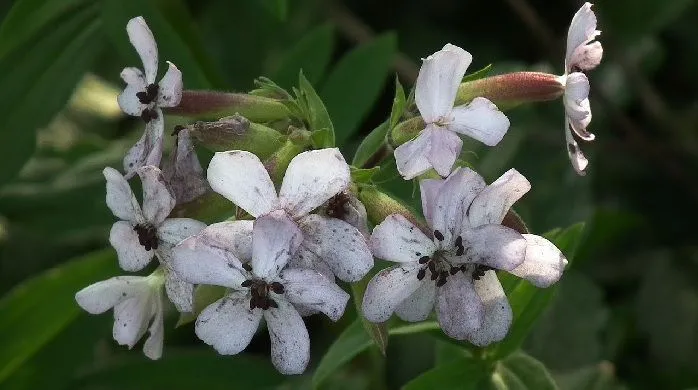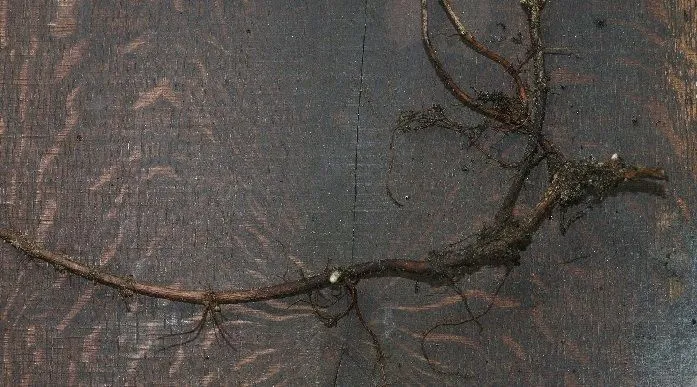Saponaria officinalis, also known as soap dish in traditional culture, is today a spectacular ornamental plant that has always had great medicinal and practical uses. Among them, the one that stands out the most is that of being able to manufacture soap without the use of caustic soda.
As soon as we enter the cultivation of saponaria, we are going to show you how to make homemade soap with saponaria, among other virtues.
Today we can find the saponaria plant in different urban gardens and botanical centers. It has a very showy flowering and has a great use as an ornamental plant.
On the other hand, with knowledge of the use of medicinal plants, we can also take advantage of some of their properties, either for therapeutic uses or to make soap with their rhizome.
These are some of the compounds that we can find in different parts of the plant of the soap dish:
- Vitamin C
- Flavonoids
- Saponin, concentrated in the rhizome and (underground stems)
- Glyceric acid
Of the most famous of this plant is the saponin, which has properties similar to those of ordinary soap (made with caustic soda).
However, it should be borne in mind that, as a contraindication, these saponins are toxic when ingested, because it can cause the rupture of cell membranes when they are absorbed and pass into the blood.
As an additional fact, say that these saponins are not exclusive to Saponaria officinalis, as they can also be found in a variety of plants, such as quinoa, cassava, ginseng, quillay, etc.
This plant belongs to the family Caryophyllaceae, which may be strange to us by name, and which is represented by a large number of herbs, shrubs and subshrubs.
Saponaria can be found in many countries and regions that can range from America, Europe and Asia. It usually grows spontaneously and without human intervention in many places, adapting without problems to different types of soil and climatologies.
Other common names that also define saponaria are as follows:
- Soap stick
- Soap herb
- Lanary herb
- Soap flower
- xabonera
- Common soap dish
Table of Contents
Saponaria culture (Saponaria officinalis)
Climatology
It is a plant adapted to different environments, although it prefers those where it can enjoy humidity. In Spain, it is common to find it in the northern areas or in high areas, but also in different parts of the Mediterranean area.
When planting it, we will need to look for a place with good exposure to the Sun, at least for most of the day.
Soil and water characteristics
It prefers clay-type soils (although it can grow in calcareous and sandy soils) and with good capacity to retain moisture. It has a powerful root system and you can go time without water supply. Organic matter helps the plant to improve its root production, so it is very interesting if we are going to use it as a medicinal plant or for soap production.
It can be fertilized with universal fertilizers just before the flowering stage, which coincides with a higher nutrient intake.
Plant multiplication
The plant can separate and form other new saponaria from the rhizome division. It is the most comfortable way since, although it can also be multiplied through seeds, it is a slower process.
In terms of pests and diseases, is usually quite rustic and is only affected by voracious aphids that do not find other crop alternatives in the area (such as horticultural crops).
Ornamental use of saponaria
Currently, the main use of Saponaria officinalis is as an ornamental plant. It has a pink flowering very attractive to the eye, which can last from spring to summer.
It usually reaches between 60 and 90 cm in height and is a plant suitable for summer blooms, accompanied by plants of taller size or another type of flowering.

In addition to its appearance, the The aroma of its flowers is very pleasant and they are usually visited by a multitude of insects (bees, wasps, butterflies, etc.).
From the soapwort, you can arrange a rockery garden, cover cespitous areas with a mantle of this type of plants (they grow very well horizontally and their multiplication is simple), or for decoration of cultivation tables, pots, terraces or balconies.
Properties and medicinal uses of saponaria
There are since historical times some medicinal properties attributed to saponaria. Today, many of them have fallen into oblivion because in high concentrations, it can become toxic.
It has been used as an expectorant, as it helped expel mucus from the larynx and bronchi when consumed by infusion and accompanied by honey or lemon.
Some of its properties:
- Purgative and diuretic
- Antirheumatic
- Helps reduce the effects of gout (like red clover)
- Analgesic
- Antiinflammatory
External uses are more accepted because thanks to its content in saponin and glyceride acid it works very well on acneic skin and to relieve the itching of eczema and skin rashes.
Does it have side effects?
High contents of saponaria, when high doses of the rhizome have been used can cause irritation of the digestive mucous membranes and respiratory conditions. It is important to use it under expert recommendation or with well-defined reading on the product label.

How to make soap with Saponaria officinalis
Not all parts of soapwort they are used to produce soap, since saponins are concentrated only in the rhizome or root.
If done carefully, removing parts of the rhizome from the plant does not mean destroying the plant or that it can grow later. Extracting a third of its root development means that the plant can continue to grow and form new tissue.
Recipe for making soap without using caustic soda:
- 50 grams of soap root.
- Sage leaves.
- Dried rosemary leaves.
- Dried abrótano leaves.
- 1 liter of water.
To make soap with saponaria, boil the liter of water and pour the leaves and the root of the soap dish, letting it rest for at least 45 minutes. Strain the solid and leftover parts and arrange it in a container or bowl.
From here, we can use the soapy solution to clean clothes, treat the skin topically, etc.
